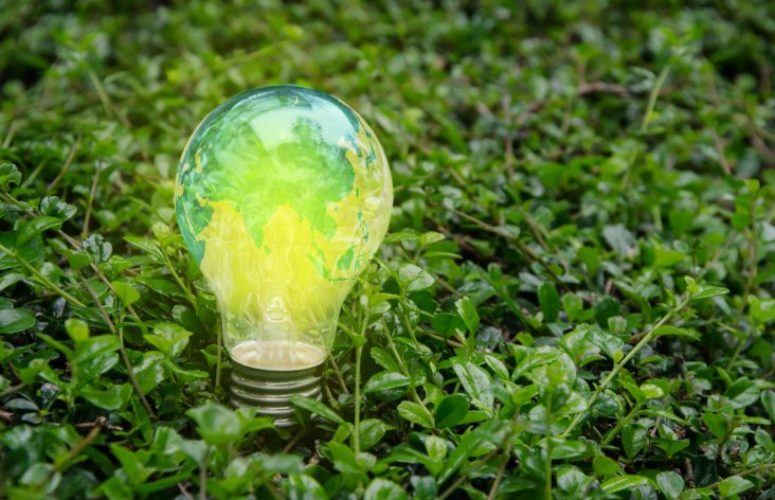
PSE&G Proposes New Clean Energy Program
PSE&G Follows State Policy For A New Era of Affordable, Clean, Reliable, Resilient and Safe Energy
On Sep 28, 2018Public Service Electric and Gas Co. (PSE&G) proposed a Clean Energy Future program (CEF) with the New Jersey Board of Public Utilities to make critical investments in clean energy and advanced technology that would propel New Jersey’s role as a national leader in energy efficiency and jump-start other clean energy priorities.
“PSE&G’s proposed investments support New Jersey’s clean energy goals, while putting our customers’ needs at the forefront,” said Ralph Izzo, chairman, president and chief executive officer of Public Service Enterprise Group. “The investments aim to keep bills lower than they were 10 years ago. In addition to providing safe, highly reliable service, utilities need to help their customers use less energy. This may be the only industry in America making a business case to sell you less of its product.”
The filing supports the state’s progressive clean energy leadership and is consistent with the Clean Energy legislation recently signed into law by Governor Murphy, which requires utilities to reduce customers’ annual electric and gas consumption by 2 percent and 0.75 percent, respectively.
“Helping our customers use energy more efficiently is the only way to simultaneously lower bills, clean the environment and create jobs,” Izzo added.
The proposal will also put New Jersey on the path to meeting the aggressive energy storage goals set forth in the law, and supports the state’s policy to bolster electric vehicles (EVs), make the electric grid more resilient, and improve storm restoration response. PSE&G shares the state’s vision with respect to these important issues.
“Clean Energy Future is expected to save customers about $7.4 billion,” said Dave Daly, PSE&G president and chief operating officer.
“The lion’s share of the investments will provide our customers with access to energy savings opportunities from 22 energy efficiency programs. These programs alone are expected to produce $5.7 billion in savings for participating customers over the program’s lifetime. Utilities can and should ensure that the benefits of energy efficiency are available to all customers, regardless of income. Energy efficiency will help customers use less energy, ensure the energy they use is cleaner and lower their monthly bills.”
If approved, CEF will build on PSE&G’s momentum to modernize its utility infrastructure, save customers billions of dollars on their energy bills, improve energy efficiency, reduce emissions, create thousands of jobs and have a multibillion-dollar impact on the local economy during the next 20 years.
CEF also includes a plan to implement an advanced technology platform, called the Energy Cloud, which would modernize the way the utility serves customers in the future. When fully implemented, the Energy Cloud is expected to save customers another $1.7 billion over 20 years.
Investments and customer benefits
CEF represents a six-year commitment for energy efficiency, EVs, energy storage and the Energy Cloud program, which would create an advanced technology network and upgrade 2.2 million electric meters to smart meters.
CEF will introduce exciting new opportunities for customers including electric school buses, which are healthier for children, and smart meters, which provide real-time data and enable faster outage restoration. Businesses, such as hospitals, that have participated in PSE&G’s energy efficiency programs to date have seen significant savings, up to $1.5 million a year. The programs will also reduce carbon dioxide emissions by about 40 million tons over the lifetime of the programs, equivalent to removing about 380,000 cars annually by 2025, growing to about 800,000 cars annually by 2035.
“Clean Energy Future is a win-win-win for New Jersey,” Daly said. “It’s aligned with what our customers want. It’s aligned with the Governor’s energy policy. And it benefits our state’s economy.
“We have already heard from a diverse and growing list of New Jersey organizations that support the goals of PSE&G’s Clean Energy Future programs,” he added. “So far, we have received support from more than 80 organizations from across New Jersey, representing environmental advocates, clean energy service providers, large and small businesses, labor organizations, elected officials, nonprofit agencies and community leaders…and more support is arriving every day.”
Energy Efficiency
The nearly $2.8 billion energy efficiency plan includes $2.5 billion of investment and $283 million in other program costs. It will allow customers to use up-front rebates and other financial incentives to purchase more efficient appliances, smart thermostats and other equipment; get free and affordable energy audits, reports and system design advice; get free and low-cost energy efficiency kits, tools and installations; and seed funding for new energy-saving techniques. The plan has a special emphasis on hard-to-reach customers, such as low-income, multi-family, small business and local governments. One program, for example, will upgrade municipal streetlights in PSE&G’s service territory with LED lights.
Electric Vehicles
The $364 million EV program includes approximately $261 million of investment and $103 million in other program costs. The proposal jump-starts broader use of EVs by supporting nearly 40,000 EV chargers, the bulk of which are for residential use. It includes mixed-use and public DC fast-charging. CEF also supports EV innovation, including custom projects for airports, ports and other transit facilities and grants for school districts to buy and operate electric school buses.
Energy Storage
Energy storage provides more flexibility and efficiency in electric systems, makes it easier to integrate renewables and provides backup so there are fewer outages. The $180 million proposal includes approximately $109 million of investments and $71 million in other program costs. It calls for 35 megawatts of energy storage capacity over six years through five programs: solar smoothing, distribution deferral, mobile storage for outage management, microgrids for critical facilities and peak reduction for public sector facilities. CEF will begin to put New Jersey on track to meet the Clean Energy legislation’s goal of 600 megawatts of energy storage by 2021 and 2,000 megawatts by 2030.
Energy Cloud
PSE&G’s Energy Cloud will produce an estimated $1.7 billion in customer savings and operational benefits over 20 years, more than double the cost. The nearly $800 million program includes an investment of approximately $721 million and $73 million in other program costs. It improves reliability, improves customer service and reduces the carbon footprint. This major undertaking includes a plan to educate customers about the many benefits of smart meters. If approved, PSE&G intends to install the smart meters by 2024.
To access more business news, visit NJB News Now.
Related Articles:





